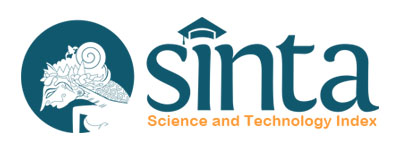Transoceanic Disperse of the White-lipped Island Pit Viper (Cryptelytrops insularis; Kramer,1997) from Sundaland to Lesser Sunda, Indonesia
DOI:
https://doi.org/10.21776/ub.jels.2019.009.01.02Abstract
White-lipped island pit viper (Cryptelytrops insularis) is one of the most distributed Viperidae in Indonesia, especially in eastern part of Sundaland and Lesser Sunda. To investigate the evolutionary history and the dispersal pattern of C. insularis, we collected 23 samples from 11 localities. Four simultaneous genes composing two mitochondrial genes (16S rRNA & ND4) and two nuclear genes (7IβFIB & 3ITBP) have been successfully amplified and sequenced. Bayesian inference was performed to reconstruct the phylogeny tree. Furthermore, time divergence and the population demography analyses were estimated. The phylogeny tree of C. insularis exhibits monophyletic group, with four geographically structured lineages. The time divergence estimation indicated that C. insularis evolved at approximately 7 million years ago (mya). Population demography was inferred by Bayesian Skyline Plot analysis, it shows that the population increased constantly from the past to recent time. The evolutionary history of C. insularis can be explained by a pattern of the time divergences estimation that indicating movement from West (Java) to East (Lesser Sunda). We expected that the dispersal factor of C. insularis into many different islands (in Lesser Sunda) is caused by the animal helped and also oceanic rafting which could be the stepping stones to another island.
Keywords: Cryptelytrops insularis, dispersal patterns, phylogeny, population demography, time divergence
Downloads
Published
Issue
Section
License
Copyright (c) 2019 The Journal of Experimental Life Science

This work is licensed under a Creative Commons Attribution 4.0 International License.
Authors who publish with this journal agree to the following terms:- Authors retain copyright and grant the journal right of first publication with the work simultaneously licensed under a Creative Commons Attribution License that allows others to share the work with an acknowledgement of the work's authorship and initial publication in this journal.
- Authors are able to enter into separate, additional contractual arrangements for the non-exclusive distribution of the journal's published version of the work (e.g., post it to an institutional repository or publish it in a book), with an acknowledgement of its initial publication in this journal.
- Authors are permitted and encouraged to post their work online (e.g., in institutional repositories or on their website) prior to and during the submission process, as it can lead to productive exchanges, as well as earlier and greater citation of published work (See The Effect of Open Access).
















